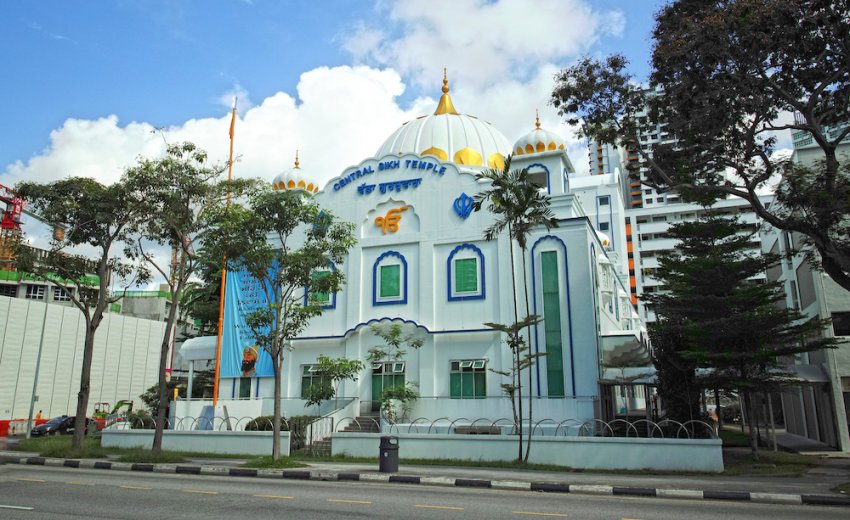Among the Indian communities in Singapore, the Sikh population represents the smallest demographic. Their presence in the city-state dates back to the era of British colonialism, with the initial Sikh arrivals coming to Singapore in various capacities associated with the British East India Company. These early Sikh immigrants served as sepoys (Indian soldiers in the British army), domestic servants, or even arrived as convicts under British jurisdiction
The term "Sikh" has its roots in religious history, originally designating those who followed the teachings of Guru Nanak, the revered founder of Sikhism. The etymology of the word "Sikh" is a subject of linguistic interest, with two possible origins. One theory suggests it derives from Sanskrit, potentially stemming from either "sisya" (meaning "disciple") or "siksa" (translating to "instruction"). An alternative explanation points to the Pali language, where the word "sikkha" carries the meaning of "training" or "study.
In contemporary usage, the definition of a Sikh has evolved to encompass a broader spiritual context. Today, the term "Sikh" is applied to individuals who adhere to and practice the teachings of the Ten Sikh Gurus. This expanded definition reflects the development of Sikhism over time, incorporating the wisdom and guidance of the successive Gurus who followed Guru Nanak.
Sikhs in Singapore
Sikhs in Singapore have historically been sought after for roles in law enforcement and security due to their reputation for fearlessness and bravery. This ancient community, with its rich cultural heritage, has made significant contributions to Singapore's development. As they progress, they draw strength from their historical roots. However, maintaining this connection to their heritage may present challenges for the younger Sikh generation.
The vice president of the Sikh Centre, Rajeshpal Singh Khalsa, observes that a child's connection to their Sikh identity largely depends on their family background. He notes that children from families who provide exposure to Sikh history, values, and customs typically have a stronger sense of cultural identity. In contrast, those who lack this exposure often experience a greater sense of disconnection from their heritage. Khalsa emphasizes that for Sikh youth who have been raised with a strong connection to their culture, their sense of identity tends to be more robust.
Nirmolak Singh Bajaj, who finished his national service, says Sikhs are a small group in Singapore. Because of this, many Sikhs, both old and young, have been picked on. This happens because there aren't many of them or because other people don't know about their religion. Bajaj thinks it's very important to keep their culture and traditions alive. He says this can show that Sikhs are united. If they don't do this, he worries people might laugh at them or think they don't respect their own religion. Bajaj feels that if Sikhs don't take their religion seriously, others won't either. He says he feels connected to his roots and has no trouble keeping in touch with them.
Missing the connection
Not all young Sikhs think the same way. Manick Kalra, a student at NUS, studies electrical engineering and business. He doesn't have a beard and doesn't wear a turban. When asked about his background, he first says he's Singaporean, then Northern Indian. He mentions being Punjabi before saying he's Sikh. Manick says he's proud of who he is, but doesn't feel very connected to his roots. He doesn't have a beard because of his father, who also chose not to wear a turban. His father thought people with turbans face unfair treatment. He might have wanted to protect Manick from this. Even Manick's name was changed slightly. This was so it could be shortened to 'Nick'. Manick thinks his father did all this to give him more chances in life, where his background might have held him back.
The evolved Sikhism
Kalra thinks not wearing a turban or shaving your beard doesn't mean you've left your culture behind. He says Sikhism is about questioning rituals, not just doing what you're told. Kalra isn't sure why he doesn't follow these customs, but he believes he shouldn't have to show his cultural background openly.
Older Sikhs might think not wearing traditional Sikh symbols is about trying to fit in. Khalsa understands this a bit. He says it can be hard because people see you as different from the start. But Khalsa also thinks following Sikh customs isn't that hard. He says if you want to live a good life and use Sikh teachings to do it, it's easy because you enjoy it.
Keeping cultural identity intact isn’t easy for the younger generation. Inderjit Singh, a businessman and former Member of Parliament for Ang Moh Kio GRC, sees this as a common challenge. Western media’s influence makes it harder for any race or religion to connect the youth with their heritage. Traditional teaching methods fall short. Singh emphasizes that understanding cultural roots defines an individual, especially the core values that strengthen our societies. Khalsa focuses on engaging youth through programs and experiences to explore their roots.
On January 11, The Straits Times featured Amardeep Singh’s work. Last month, the former credit card executive published a 500-page book titled Lost Heritage: The Sikh Legacy in Pakistan. This book meticulously documents the traces of Sikh heritage left behind during the partition. It encourages readers to reflect on their lineage through powerful images and texts that silently bear witness to the rich and enduring Sikh legacy.
It's worth noting that Sikhs are a proud people—and with good reason. The term "Singh," meaning "lion," is commonly adopted by male Sikhs, while female Sikhs often use the name "Kaur," meaning "princess."Preserving the Sikh heritage in Singapore requires a collective effort to engage the younger generation, ensuring that their rich cultural legacy remains vibrant and respected.
*Based on an article by Thomas Oliver, published in six-six.com on 19th January 2016

